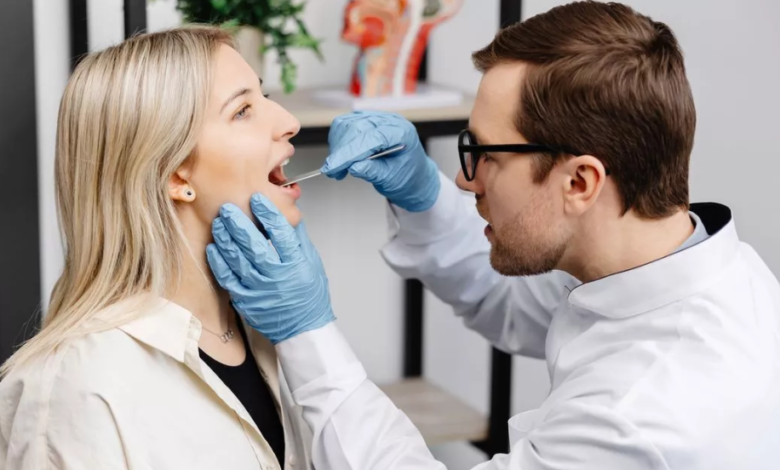What Your Tongue Can Tell You About Your Health

Most of us think of our tongues as tools for tasting food and helping us speak clearly — but they’re actually a powerful window into our overall health. From subtle colour changes to unusual textures, your tongue can reveal clues about everything from dehydration to vitamin deficiencies and even infections. Paying attention to your tongue’s appearance can help you catch health issues early and understand your body better.
Why Your Tongue Is a Health Indicator
Your tongue is covered with tiny bumps called papillae and has a rich network of blood vessels and nerves. Because of this, it responds quickly to changes in your body. When you’re healthy, your tongue should generally appear pink with a thin white coating and move easily without pain.
However, when your body is under stress, fighting infection, or lacking key nutrients, your tongue is often one of the first places those changes show up. Many doctors and dental professionals use it as part of routine check-ups to spot early warning signs of illness.
A quick self-check every few days in the mirror — especially when brushing or flossing — can help you notice any new colour changes, bumps, or coatings. If something looks different and doesn’t clear up within a week, it’s worth getting it checked by your GP or a dentist Campsie who can guide you on whether further examination is needed.
The Meaning Behind Tongue Colours
The colour of your tongue can say a lot about what’s going on inside your body.
1. Pale or white tongue
A pale tongue might indicate a lack of blood flow or a deficiency in iron or vitamin B12, which can cause anaemia. It can also signal that your body is run down or not getting enough oxygen. A white coating, on the other hand, could suggest an overgrowth of yeast (oral thrush) or dehydration.
2. Bright red tongue
If your tongue looks unusually red, it could point to inflammation, fever, or a vitamin deficiency — particularly B vitamins. Sometimes a red, smooth “glossy” tongue can indicate a condition known as “geographic tongue,” where patches appear and disappear over time.
3. Purple or bluish tongue
A tongue with a bluish or purple tint might signal poor blood circulation or heart-related issues. While it doesn’t always mean something serious, it’s worth mentioning to your healthcare provider if it persists.
4. Yellow tongue
This can happen when bacteria build up on the tongue’s surface, especially if oral hygiene habits slip. Smoking, dry mouth, or even certain medications can also cause discolouration.
5. Black or brown tongue
Although alarming to look at, a black, hairy-looking tongue is usually harmless. It’s often caused by a build-up of dead cells, bacteria, or staining from coffee, tea, or tobacco. Regular tongue brushing or scraping can usually fix it.
Texture and Surface Changes
The surface of your tongue also holds important clues about your health.
Smooth, glossy tongue
If your tongue looks unusually smooth and shiny, it may be due to a lack of certain nutrients like iron, folic acid, or vitamin B12. These deficiencies can cause inflammation and soreness, making it uncomfortable to eat or speak.
Cracked or fissured tongue
Small grooves or cracks on the surface are quite common and usually harmless. However, if they become deep, sore, or filled with debris, it could lead to irritation or infection. Regular cleaning and hydration help keep it in good shape.
Swollen tongue
Swelling can occur for many reasons — from allergic reactions and infections to thyroid issues. If it comes on suddenly or makes it hard to breathe, seek medical help immediately.
Hairy or furry tongue
This occurs when the papillae on your tongue become elongated and trap bacteria or food particles, creating a “hairy” appearance. It’s more common in people who smoke, drink a lot of coffee or tea, or don’t brush their tongues regularly.
See also: The Essential Role of Medical Staffing Agencies in Modern Healthcare
Common Tongue Conditions
1. Geographic tongue
Named for its map-like pattern, this condition causes red patches surrounded by white borders. It’s harmless but can make your tongue more sensitive to spicy or acidic foods. The exact cause isn’t known, but it’s linked to stress, hormonal changes, or allergies.
2. Oral thrush
Thrush is a yeast infection caused by Candida albicans. It often appears as white patches that can be wiped away, revealing red, sore skin underneath. It’s common after antibiotic use, in people with weakened immune systems, or those who wear dentures.
3. Canker sores
These small, painful ulcers can appear on or under your tongue. They’re not contagious but can make eating and speaking uncomfortable. Stress, certain foods, or minor mouth injuries often trigger them.
4. Leukoplakia
This condition causes thick white patches that don’t scrape off easily. While it’s often harmless, it can sometimes be precancerous, particularly in smokers or those who use alcohol heavily. Always get persistent patches checked by a professional.
5. Lichen planus
A chronic inflammatory condition that can cause white, lace-like patches or painful sores on the tongue and inside the cheeks. It’s thought to be related to immune system overactivity.
How Your Lifestyle Affects Your Tongue
Your daily habits play a major role in how healthy your tongue looks and feels.
- Hydration: A dry mouth can make your tongue appear cracked or coated. Aim to drink plenty of water throughout the day to help your body flush toxins and maintain saliva flow.
- Diet: Foods rich in vitamins and minerals, particularly those containing B vitamins, iron, and zinc, support a healthy tongue and gums.
- Oral hygiene: Brushing your tongue (or using a tongue scraper) removes bacteria that can cause discolouration and bad breath.
- Smoking and alcohol: Both can stain your tongue and increase your risk of infections and oral cancer. Quitting or reducing these habits has immediate benefits for your mouth and body.
- Stress: Chronic stress weakens your immune system, making you more prone to ulcers, thrush, and inflammation.
When to See a Professional
While most tongue changes are harmless, some can indicate underlying health problems that need attention. See your doctor or dentist if you notice any of the following:
- Persistent pain or swelling
- Sores or patches that don’t heal after two weeks
- Thick white or red patches that can’t be wiped away
- Difficulty swallowing or speaking
- Numbness or tingling in the tongue
Regular dental check-ups are essential, even if your mouth feels fine. Dentists can spot subtle changes that may point to conditions like oral cancer or vitamin deficiencies before they become serious. Early detection makes treatment faster, simpler, and more effective.
Caring for Your Tongue
Maintaining a clean, healthy tongue is simple but often overlooked. Here are a few steps to include in your daily routine:
- Brush or scrape your tongue daily. Use your toothbrush or a tongue scraper to gently remove debris and bacteria.
- Rinse with water after meals. This helps wash away food particles and reduce acid build-up.
- Use a mouthwash if needed. Choose one that’s alcohol-free to avoid drying out your mouth.
- Avoid overly sugary or acidic foods. They can alter your mouth’s pH and contribute to bacterial growth.
- See your dentist regularly. Professional cleanings and exams help maintain overall oral health.
The Bigger Picture
Your tongue might seem like a small part of your body, but it offers valuable insight into your overall wellbeing. Subtle changes in colour, texture, or coating can act as early warning signs for a wide range of health conditions — from mild nutrient deficiencies to more serious illnesses.
By paying attention to your tongue and maintaining good oral hygiene, you’re not just keeping your mouth clean; you’re also taking care of your whole body. A few seconds in front of the mirror each day could make all the difference in catching potential health issues early — and that’s something to smile about.





